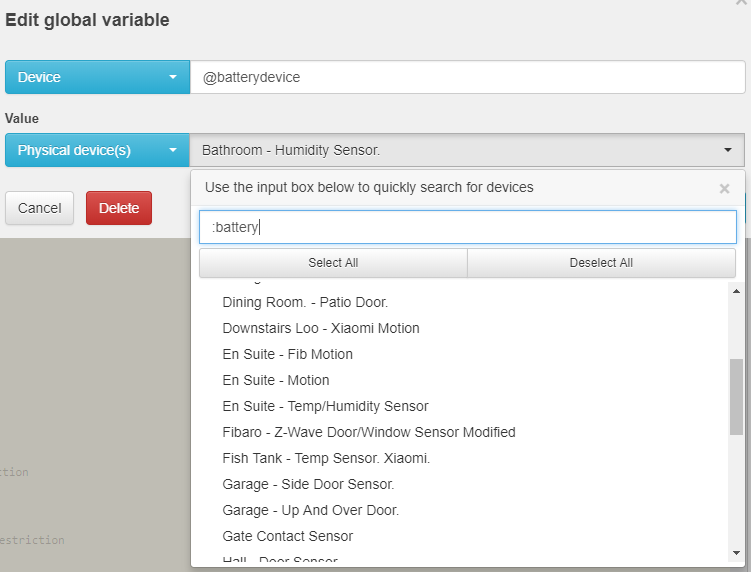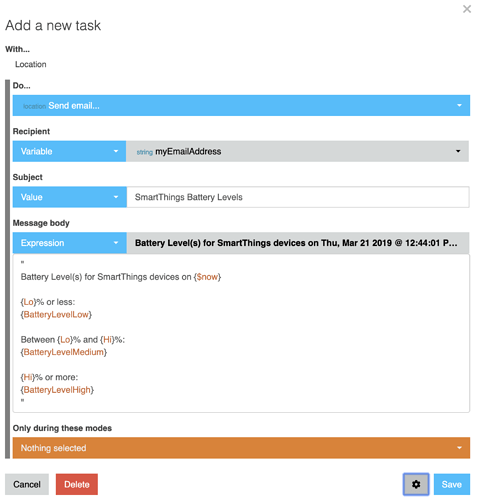Okay, I’m humming along myself creating brand new pistons. Very nice app.
Now I ran into a confusing issue for a noob.
I want to create battery alerts for my battery-driven devices. So, first question:
Should I create one piston for each device or one piston with each device within it? If the latter, what sort of logic should I look to? I assume I’ll need some sort of variable use to say something like, "If Lock then Device$ = “Lock” so that I can then send a notification (via e-mail or SMS) that says “The battery in the LOCK is low” by passing, “The battery is the " + DEVICE$ + " is low.”
Second, the conditions create a dilemma. If I say something like,
IF Basement Water Sensor battery is equal to or less than 10% then send SMS…
… then I’m confused as to how that stops running as it stays at 10% and drops to 9%, 6%, etc. Seems as if I’d get a notification continuously from then on.







